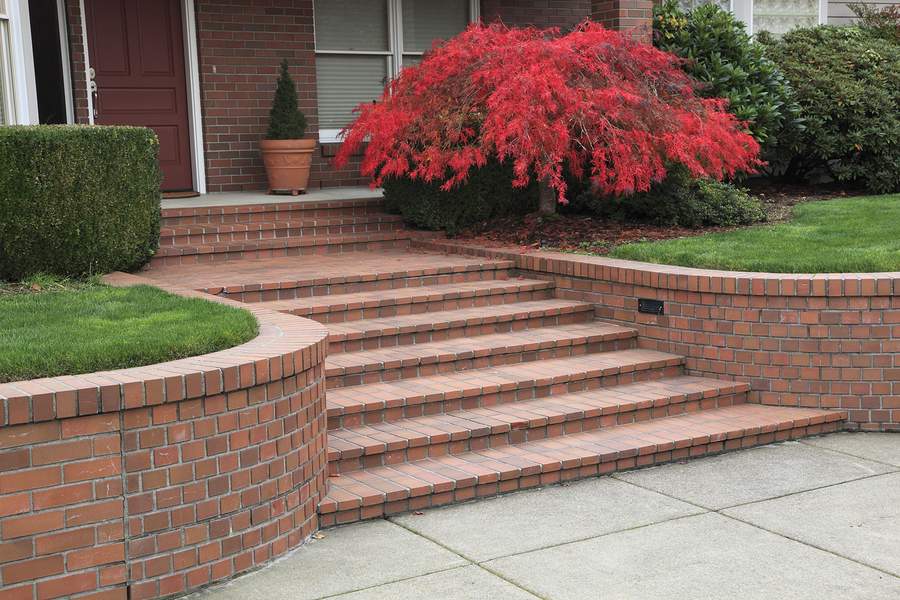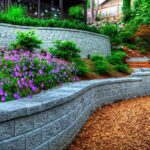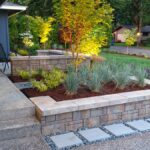A Case for Building A Retaining Wall At Your Minnesota Home
Retaining walls are a common site around homes in Minnesota. The chances are that you’ve seen them and admired their beauty, but often they also serve an essential function in a home’s landscaping. A retaining wall provides support and protection to architectural items on your property like a shed, patio, or driveway, holding back the land behind them and preventing it from sliding downhill. The wall offsets the gravitational force of the hill, keeping the soil stable.
By turning what was once a graded hill into a level plain using a retaining wall system, it slows water runoff and helps to protect your yard from flooding during heavy rainfall. The flat area breaks the momentum of the water and allows it to percolate into the soil.
Learn About Retaining Walls Built For Minnesota Homeowners
A retaining wall system can increase the amount of usable space on your property, turning unusable hillsides into a flat, stable surface perfect for a garden, walkway, or patio. Or you can use the area to open up your landscaping for more accessible walking and to relax.
So, do you need a retaining wall for your Minnesota property? Let’s look at some essential considerations before you start your project.
When Should You Consider A Retaining Wall System?
There are several reasons for building a retaining wall. The first consideration is how your home is placed on your property. If your home sits at the top of a hill, flooding may not be an issue, but you may not have the space to create viable gardens or room for entertaining comfortably.
If you strategically build several small retaining walls, you can create several steps or terraces that can add usable flat space to your landscape. Space you can use to make a stable outdoor entertaining area, plant lush gardens, or add a fire feature.
Let’s look at the opposite scenario. Your home sits at the bottom of a hill. You must protect it against the genuine possibility of flooding. A retaining wall (along with other structures and drainage solutions) can help protect your home from flooding and erosion risk. Without a retaining wall, the hill can cause severe damage to your property over time.
Another consideration is if your home has a walk-out basement or you want to build a pool or patio area. You may need a retaining wall to protect the entrance to the basement, or to level an area to construct a pool. A retaining wall can ensure that you have a large enough piece of flat level land to site a pool or patio area.
The Benefits of Adding A Retaining Wall To Your Property
Along with the protection and functionality a retaining wall offers, you’ll also add interest and aesthetic beauty to your property. Many realtors, property appraisers, and buyers view a retaining wall as a smart investment in your home. They can potentially increase your home’s value should you ever decide to sell, or take out an equity loan.
For maximum beauty, plan your landscaping in Minnesota by incorporating the wall to make it fit into your design. This can help you to make the most of your property and create usable spaces like an outdoor patio or lush garden area.
Retaining walls compliment your pool area or can even be used as a walkway leading to your main entrance. You can also use a retaining wall system to add privacy to a portion of your yard.
Types of Retaining Walls and Common Materials
Depending on your property’s topography, there are two standard retaining wall systems your hardscaping contractor may employ. They are gravity walls or engineered walls.
Gravity walls work by using the weight of concrete blocks or stones to hold the wall together and retain the soil behind them.
Engineered walls stabilize soil using a material called Geogrid. This is a geosynthetic material that is designed to reinforce soils and hold back a hill or slope. The outside of the engineered wall (typically made of concrete block) is often finished using a stone veneer to provide a beautiful face to the underlying block construction.
There are several different materials commonly used to construct retaining walls. These include:
-
Segmental Retaining Wall Blocks
Are processed and placed using an interlocking system that keeps the wall held together and to fortify it structurally.
-
Natural Stone
This is typically used in smaller lower walls to give them a natural look while still maintaining their structural significance. These generally are the most attractive types of walls built using gorgeous stones.
-
Wood Timbers or Railroad Ties
These materials give your walls a natural aesthetic and sometimes a rustic look that’s also best for smaller walls. Keep in mind that wood will not have the longevity of stone and will rot over time, even if pressure treated.
-
Gabion
A gabion wall consists of wire baskets filled with stone. These are an excellent option for homes that experience a lot of rainfall. This type of material and construction drains water exceptionally efficiently.
-
Poured Concrete
Concrete is the best choice to withstand the worst of flooding. Concrete walls function similarly to your home’s foundation and are a durable alternative. They do require a footing, so they are not always the best choice. Using poured concrete doesn’t mean that your wall has to be a functional eyesore.
These types of walls can be veneered with natural or humanmade stone, wood, or even metal to create an aesthetically pleasing and highly useful structure.
Some Final Considerations
From functioning to protect your property by adding more usable space to a hilly yard, a retaining wall system is a valuable addition to your home. But before you start, do your homework!
First, understand your town or city’s permitting process. You may need to submit paperwork, or an engineering study to your town to get approval. You may also need to obtain records about any underground utilities. Some states may require you to produce drawings prepared y a structural engineer before building any structure over a base height, for example, 36-inches.
Beyond approvals, you need to educate yourself on the process of building a retaining wall. What it will take and how it will affect your budget.
Do your due diligence, and seek out a professional hardscaping contractor. They can help you to determine the correct system to build and work with you to incorporate it into your existing landscape design and long-term plans.
A professional hardscaping contractor in Minnesota can help you to create a structure that is not only functional but will add beauty and value to your home!
If you’re not sure where to start or would like to discuss your project, and you live in Minnetonka, Eden prairie, Edina, Delano, St. Louis park, Minneapolis, St. Paul State of Minnesota, give the experts at Green Grounds Landscaping a call at 612-408-4796.
We’ll work with you to design the perfect hardscape to meet your family’s unique needs. Our knowledgeable team members are ready to help you create the outdoor living space you’ve been dreaming about!









